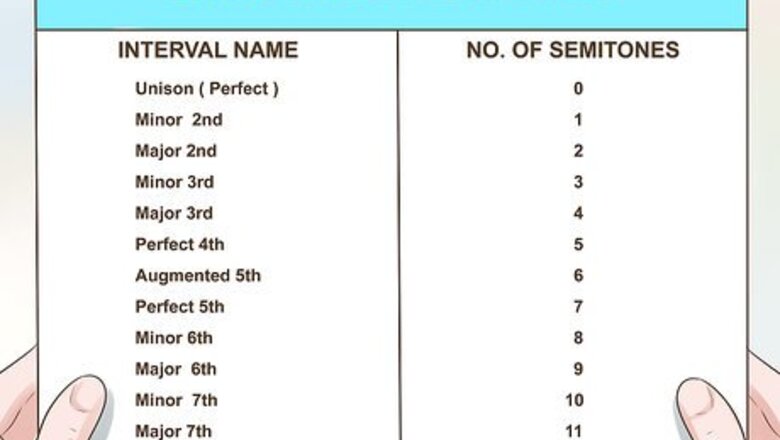
views
Recognizing Intervals
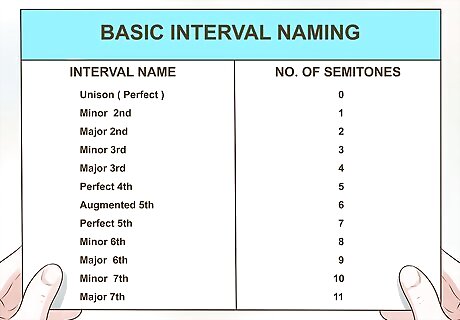
Know how intervals are named. An interval is described by its quality and degree. The degree of an interval can range from one to seven. These numbers refer to the seven notes that are in a major or minor scale. The quality of an interval can be “major,” “minor,” or “perfect.” There are 13 main types of intervals. For example, an interval may be “minor third” or “perfect fifth.” Major intervals usually sound more upbeat compared to minor intervals.

Use reference songs. Identify songs that you already know that start with an interval that you want to learn. The interval should be the first two notes of the melody. When you hear the melody, you are teaching your brain to recognize the interval. There are online tools (EarMaster.com, VCU Music Theory, AudioJungle.net, and HornInsights.com) to help you find reference songs that you know. Trainear.com is a free tool that allows you to practice and test your skills. Apple has also developed an app called Interval Recognition that you can practice and test yourself with. This is a good method if you are new to relative pitch training. "She Will Be Loved" by Maroon 5 can be used for minor 2nd. "Poker Face" by Lady Gaga can be used for minor 3rd. "Rolling in the Deep" by Adele can be used for perfect 4th. The Star Wars theme song can be used for perfect 5th.
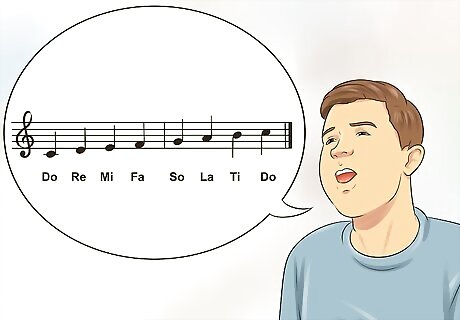
Practice Solfege. Solfege is a system used to sing notes. The solfege note names are “do,” “re,” “me,” “fa,” “so,” “la, “ and “ti.” Learn which pairs of solfa syllables correspond with each interval. The syllables allow to associate singable words for different notes. This gives your brain a context for understanding intervals. For example, “do-re” is “major second, :” and “do-le/si” is “minor sixth.” This method is difficult if you are not already familiar with solfege. If you are already familiar with solfege, this method will come naturally to you.

Try the Nike method. In this approach, you will not use solfege or reference songs. You simply listen to different intervals until you can recognize them and compare intervals to see if you can recognize the differences. You will do this repeatedly until you are able to identify and differentiate between intervals. You are treating intervals as abstract sounds that are not part of real music. It can be difficult to recognize the intervals within music when you have only learned them as isolated sounds. Use an online interval trainer like intervaleartrainer.com or a mobile phone app (e.g. RelativePitch, Perfect Ear 2, or Complete Ear Trainer) to help you. You can also work with an experienced musician or singer to play notes for you and test your recognition. This approach is a nice addition to using reference songs. If you play an instrument, you can play the notes on your instrument and use a tuner to make sure that you are in tune.
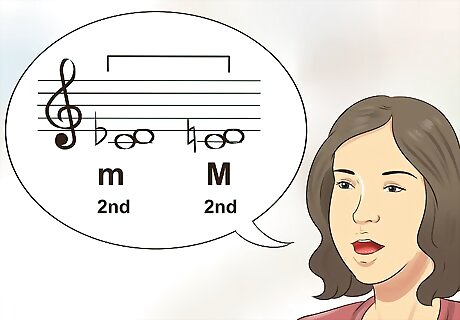
Focus on the most important intervals. It can be overwhelming to learn all 13 intervals. Focus on the intervals that are the building blocks for developing your relative pitch. Start by learning the major and minor seconds, major and minor thirds, and perfect fourth and fifths. The major and minor seconds are the most common used intervals used in between notes. The major and minor thirds and perfect fourths and fifths are important for harmony, chords, and chord progression.
Learning Musical Chords
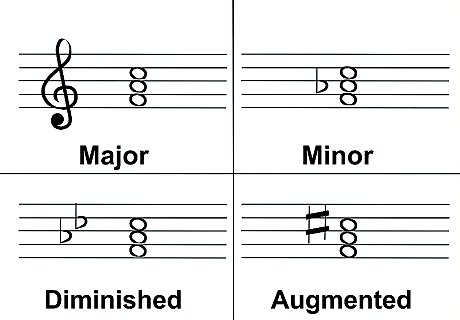
Know the basic triads. A triad is three different notes that are each a third apart. Triads form most of the harmonies you will hear in music. The four basic chord triads are: major triads, minor triads, augmented triads, and diminished triads. Each tried is formed by combining certain intervals. Major triads are formed with a pitch, a root, and a note that is a major third above. For example, the C major triad includes the notes C,E, and G. Minor triads are formed in the opposite of order of a major triad and include a minor third interval and and a major third. For example, C minor triad includes the notes C, Eb, and G. The middle note determines the difference between a major and minor triad. A diminished triad only uses a minor third interval. For example, a C diminished triad includes the notes C, Eb, and Gb. An augmented triad only uses major third intervals. For example, C augmented triad includes the notes, C, E, and G#. Complex chords are made by stacking triads. If you learn the basics, you will be able to progress to more complex sounds.

Play the chords. Use an instrument, another person, or a website to play chord tones. As you listen to the chord, try to decipher the three different notes that make up the chord. Try to isolate the different sounds in each chord. You can download MP3 tracks of the chords if you are working on your own.
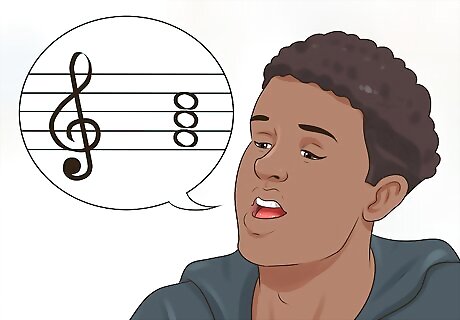
Sing the chords. After you listen to a chord, sing the notes in each triad. Then, play a different triad and sing the notes. Next, play two triads at the same time, and then sing the 6 notes that you hear. When you begin to combine triads, always break down the sounds into smaller chunks. For example, it may help to play two triads, and only try to find the root note. Then play the same triads and listen for the top note.
Creating an Ear Training Program

Practice daily. The more you practice the better your relative pitch will become. You also need to practice consistently. Practicing every single day one week and then only practicing twice the next week is not good practice. It would be better to have short sessions every day of the week. Try to do 10 minutes of training each day. This is the absolute minimum.

Set a time limit for your sessions. If your sessions are too long, you run the risk of overtraining. Your ears will become tired, and you won't be able to hear the notes as you normally would. If your ears get tired or you are no longer progressing in your training session, take a break or stop for the day. A training session may consist of 15 minutes of listening and singing chords and 15 minutes of interval and chord practice with your instrument.
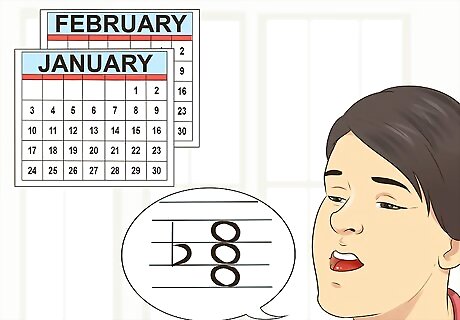
Focus on one skill at a time. Ear training should be part of your life no matter how good you get. Be sure to spend enough time on each skill instead of going back and forth. Write down a study plan that you will follow. Your study plan should include the skill you plan to work on and the length of the training period. For example, you may spend January and February learning major intervals using reference songs, and then spend March and April learning minor intervals using reference songs. Using computer software like Earmaster and Transcribe can also help you outline your sessions and track your progress.




















Comments
0 comment